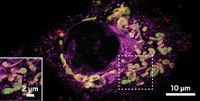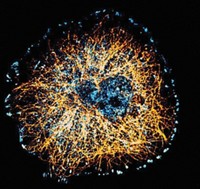Advertisement
Grab your lab coat. Let's get started
Welcome!
Welcome!
Create an account below to get 6 C&EN articles per month, receive newsletters and more - all free.
It seems this is your first time logging in online. Please enter the following information to continue.
As an ACS member you automatically get access to this site. All we need is few more details to create your reading experience.
Not you? Sign in with a different account.
Not you? Sign in with a different account.
ERROR 1
ERROR 1
ERROR 2
ERROR 2
ERROR 2
ERROR 2
ERROR 2
Password and Confirm password must match.
If you have an ACS member number, please enter it here so we can link this account to your membership. (optional)
ERROR 2
ACS values your privacy. By submitting your information, you are gaining access to C&EN and subscribing to our weekly newsletter. We use the information you provide to make your reading experience better, and we will never sell your data to third party members.
Analytical Chemistry
Single Glycoproteins Caught In Motion
Fluorescence-labeling technique could aid understanding of cancer growth
by Stu Borman
January 5, 2015
| A version of this story appeared in
Volume 93, Issue 1
Scientists have devised a way to track the movement of single glycoprotein molecules on surfaces of living cancer cells and on microfibrils that connect cells. The work could aid understanding of the role membrane glycans play in cancer growth and spread. Up to now, glycan motions have generally been studied by taking averages of the behavior of many sugar molecules. Peng Wu and Ben Ovryn of Albert Einstein College of Medicine, in New York City, and coworkers now report a fluorescence-based method that visualizes motions of single glycoproteins (Angew. Chem. Int. Ed. 2014, DOI: 10.1002/anie.201407976). The approach monitors the fluorescence of dye molecules linked by click chemistry to azide-tagged O-linked glycans or alkyne-tagged N-linked glycans on live metastatic cancer cells. The study reveals that the glycans exhibit “constrained diffusion”—that is, they diffuse only one-third to one-half as fast as those on nonmetastatic cells. Wu, Ovryn, and coworkers also used the approach to take STORM (stochastic optical reconstruction microscopy) images of glycans on membrane microfibrils in live cancer cells.






Join the conversation
Contact the reporter
Submit a Letter to the Editor for publication
Engage with us on Twitter